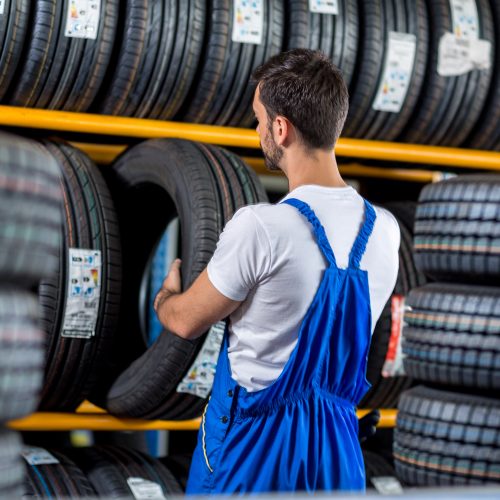Modern tire technology blends a unique mix of chemistry, physics and engineering to give consumers a high degree of comfort, performance, efficiency, reliability and safety. Many tires are custom-designed to meet the stresses and performance needs specified by the maker of a particular model vehicle.
Every tire is carefully inspected, and random samples are pulled for additional safety tests. As part of these tests, tires are x-rayed, cut apart and examined, run on test wheels, or road-tested to evaluate handling, mileage and traction performance. If properly cared for, tires can last a long time – usually from 40,000 to 80,000 miles, depending on the application.
As many as two hundred different raw materials combine into a unique mix of chemistry, physics and engineering to give consumers the highest degree of comfort, performance, efficiency, reliability and safety modern technology and creativity can provide. Here are the basic steps:
Planning and Design
Many tires are custom-designed to meet the stresses and performance needs specified by the maker of a particular model vehicle. The process begins with a computer, which converts the mathematics of the car’s special needs into specifications. A prototype tire is then made to test the tire design’s ability to provide the desired characteristics. Custom-designing a tire for a particular vehicle typically takes many months of testing, inspection, and quality checks by the tire maker and the vehicle maker. Only then does the vehicle maker commit with an order.
Manufacturing
The production process begins with the selection of several types of rubber along with special oils, carbon black, pigments, antioxidants, silica, and other additives that will combine to provide the exact characteristics wanted. Separate compounds are used for different parts of the tire. A machine called a banbury mixer combines the various raw materials for each compound into a homogenized batch of black material with the consistency of gum. The mixing process is computer-controlled to assure uniformity.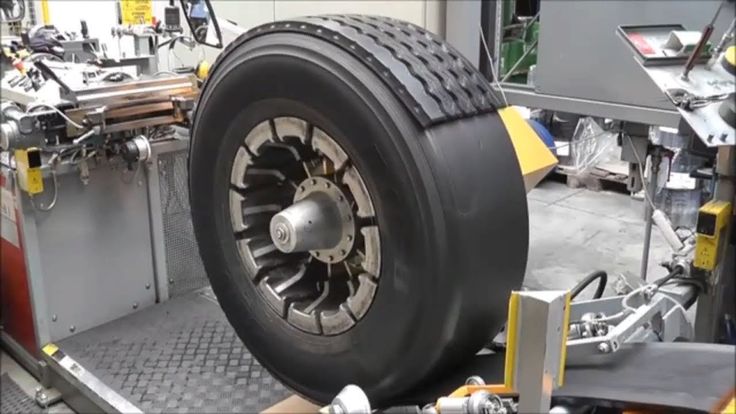 The compounded materials are then sent to machines for further processing into the sidewalls, treads or other parts of the tire.
The compounded materials are then sent to machines for further processing into the sidewalls, treads or other parts of the tire.
Then the task of assembling the tire begins. The first component to go on the tire building machine is the innerliner, a special rubber that is resistant to air and moisture penetration and takes the place of an inner tube. Next come the body plies and belts, which are often made from polyester and steel. Plies and belts give the tire strength while also providing flexibility. The belts are cut to the precise angle and size the tire engineer specifies to provide the desired ride and handling characteristics. Bronze-coated strands of steel wire, fashioned into two hoops, are implanted into the sidewall of the tires to form the bead, which assures an airtight fit with the rim of the wheel. The tread and sidewalls are put into position over the belt and body plies, and then all the parts are pressed firmly together. The end result is called a “green” or uncured tire.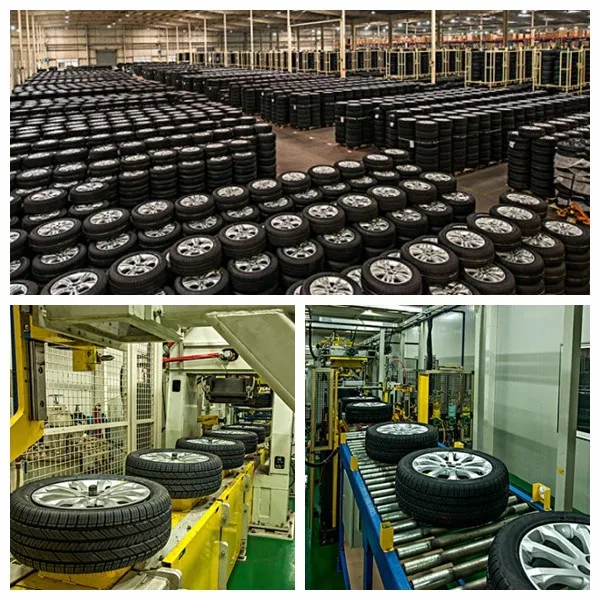
The last step is to cure the tire. The “green” tire is placed inside a mold and inflated to press it against the mold, forming the tread and the tire identification information on the sidewall. Then it is heated at more than 300 degrees Fahrenheit for twelve to fifteen minutes, vulcanizing it to bond the components and to cure the rubber. (FACT: This twelve to fifteen minute curing process is for passenger and light truck tires only, off-road and large tires may take up at a day to cure because of their size!) Every tire is then inspected, and sample tires are randomly taken from the line and tested. Some are x-rayed, some are cut apart to look for flaws, others are run on test wheels, or road-tested to evaluate handling, mileage and traction performance.
A tire is a complex combination of components made from numerous ingredients. But how do we get from the rubber tree to the road? Tire production is a multi-step process. Let’s follow a Continental tire through all five essential stages of tire manufacturing:
Let’s follow a Continental tire through all five essential stages of tire manufacturing:
Various branches of industry supply the tire manufacturing industry with raw materials, which are used to create the necessary compounds.
Steel. The steel industry supplies high-strength steel. This serves as the starting material for the manufacture of steel belts (steel cord) and of bead cores (steel wire).
Chemicals. The chemical industry is a major tire ingredient supplier. In particular, synthetic rubber and materials used to reduce wear, increase grip, and extend the life of a tire.
Natural rubber. Rubber is extracted from special trees grown in large plantations. The milky fluid (latex) that flows out coagulates when acid is added to it. It is then cleaned with water and pressed into solid bales for easier transportation and storage.
The milky fluid (latex) that flows out coagulates when acid is added to it. It is then cleaned with water and pressed into solid bales for easier transportation and storage.
Bales of natural and synthetic rubber are sectioned, cut into portions, weighed, and mixed with other ingredients according to precise recipes. Up to twelve different rubber compounds are used in modern passenger car tires.
Textiles. The textile industry supplies base materials (rayon, nylon, polyester, and aramid fibers) for the manufacture of cords that serve as reinforcement in tires.
Steel cord. Pre-treated steel cord supplied on wire spools is fed into a calendar, where it is embedded in one or more layers of rubber. The result is a continuous sheet of cord and rubber. This is cut at a defined angle to the correct length according to tire size and rolled up for further processing.
Tread. Kneadable rubber material that has been blended in a mixer is now ready to be made into the tread. A screw-type extruder shapes the rubber into an endless strip of tread. After extrusion, the weight per meter is checked and the tread cooled by immersion. The tread strip is cut to length for the tire size. Another unit weight control is then carried out.
A screw-type extruder shapes the rubber into an endless strip of tread. After extrusion, the weight per meter is checked and the tread cooled by immersion. The tread strip is cut to length for the tire size. Another unit weight control is then carried out.
Textile cord. A multitude of textile threads are fed into the calendar by a large roller device and embedded in a thin layer of rubber. This endless sheet is then cut to the desired width at a 90° angle to the direction of travel and rewound for further processing.
Steel bead. The core of the bead is made up of many ring-shaped steel wires. Each of them has its own rubber coating. This loop is then fitted with a rubber apex.
Sidewall. Sidewall sections cut to suit the particular tire size are turned out with the extruder.
Inner liner. A calendar forms the airtight inner liner into a wide, thin layer.
Now, the tire building can begin.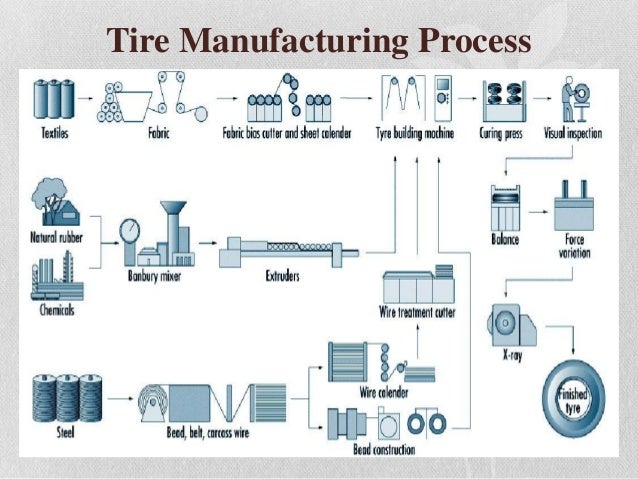 The various semi-finished products come together on the tire building machine and are assembled into what is known as a “green tire.” This is done in two stages: the casing, and the tread/belt assembly. This “green tire” is then sprayed with a special fluid to prepare it for vulcanization.
The various semi-finished products come together on the tire building machine and are assembled into what is known as a “green tire.” This is done in two stages: the casing, and the tread/belt assembly. This “green tire” is then sprayed with a special fluid to prepare it for vulcanization.
Now we’re in the curing press. Here, the tire receives its final shape after being vulcanized for a certain length of time at a certain pressure and temperature. During this process, raw rubber becomes flexible, elastic rubber. Curing press molds are engraved with the tread pattern and sidewall markings.
Each individual stage of production – from the inspection of raw materials to delivery of finished tires – is subject to ongoing quality control.
A multi-layered process ensures Continental tires are thoroughly checked for quality. Finished Continental tires go through:
Once tires have passed all checks and inspections, they are sent to the distribution warehouse for shipment.
The fastest way to the perfect tire.
Select tiresize or Show results
The tire is the only part of the car that comes into contact with the road. The area of this contact (contact patch) is approximately equal to the area of one human palm. Thus, the car on the road is held by only four palms! Therefore, tires are without a doubt a very important element of driving safety.
In addition to the critical task of providing traction and handling for a vehicle, a tire must also provide comfort, durability, improve fuel economy and complement the vehicle's appearance. The need to combine these different characteristics makes tire design a much more complex process than it might seem at first glance. And tire manufacturing involves just as much research and technology as a mobile phone.
Conventionally, the stages that a tire goes through before reaching the store shelves can be divided into 3 stages:
Market analysis
Simulation and testing of model
Mass production
In its market research, Michelin pays great attention to the demands of drivers, not only current but also possible future tire requirements. The development of the automotive market is also monitored.
Particular attention is paid to the peculiarities of using tires in specific conditions, which include not only driving characteristics, but also climatic conditions, road specifics and surface quality.
All this allows us to fully meet the needs of the most demanding customers.
Based on the data obtained, painstaking work begins on the creation of the future tire. Not only chemists and designers take part in this process, but also many other specialists, for example, industrial designers.
Not only chemists and designers take part in this process, but also many other specialists, for example, industrial designers.
The success of the future tire depends on the collaboration of various specialists. A high-quality and reliable tire is not so much a technological secret, but a real art, which consists in the correct selection, dosage and interrelation of the various components of the tire.
Its development, preparation and production is akin to creating a culinary masterpiece. This is the most secret part of the tire, and although about 20 main components are widely and well known, it is not possible to find out more about the rubber compound. After all, the secret lies not only in the components of the mixture, but in their competent combination and balance, which will endow the tire with its specific functions.
Basic elements of the tire rubber compound:
Rubber. There are two types - natural and synthetic, it is added to the rubber compound in various proportions depending on the purpose of the tire, it is its basis. Natural rubber is the dried sap of the hevea tree, also found in other types of plants, such as dandelions, but due to the complexity of the manufacturing process, it is not made from the latter.
There are two types - natural and synthetic, it is added to the rubber compound in various proportions depending on the purpose of the tire, it is its basis. Natural rubber is the dried sap of the hevea tree, also found in other types of plants, such as dandelions, but due to the complexity of the manufacturing process, it is not made from the latter.
Synthetic rubber is a product made from petroleum. Currently, several dozen different synthetic rubbers are used, each of which has its own characteristics that affect the specific characteristics of the tire. The latest generations of synthetic rubbers are very close in properties to natural, but the tire industry still cannot refuse the latter.
Carbon black. A significant part of the rubber compound consists of industrial carbon black (carbon black), a filler offered in various versions and giving the tire its specific black color. Carbon black was first used in tires at the beginning of the 20th century, until that time tires had a pale yellow color (the color of natural rubber).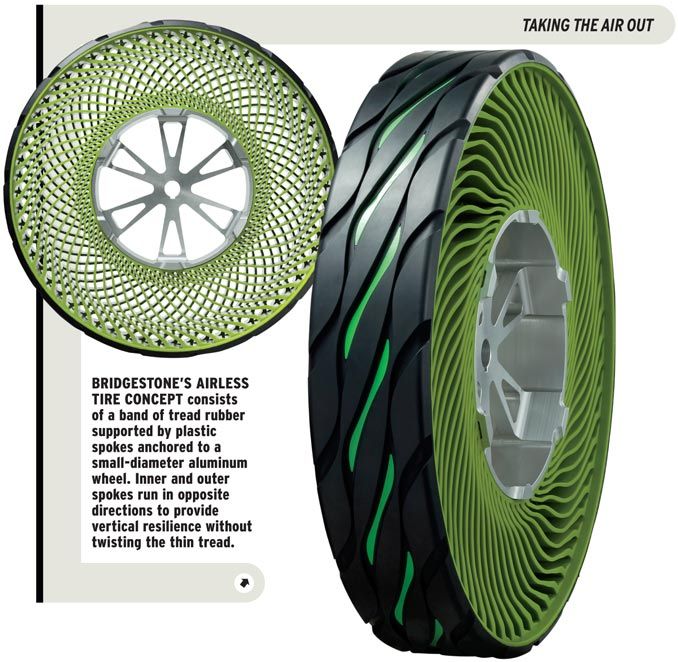 The main purpose of carbon black is to create reliable molecular compounds to give the rubber compound special strength and wear resistance.
The main purpose of carbon black is to create reliable molecular compounds to give the rubber compound special strength and wear resistance.
Silicon dioxide (silica). This component was once introduced into the rubber compound as a replacement for carbon black. In the process of testing the new composition, it was found that silicon dioxide cannot displace soot from the rubber compound, since it does not provide the same high rubber strength. However, the new component improved wet grip and reduced rolling resistance. As a result, these two elements are now used together in the tire, while each of them endows the tire with its best qualities.
Sulfur. Is one of the components involved in vulcanization. Through this process, the ductile raw rubber compound is transformed into a flexible and durable rubber.
When creating a tire, work is carried out not only on the characteristics of the tire, but also on the aesthetic side, a large number of different tread pattern designs are considered.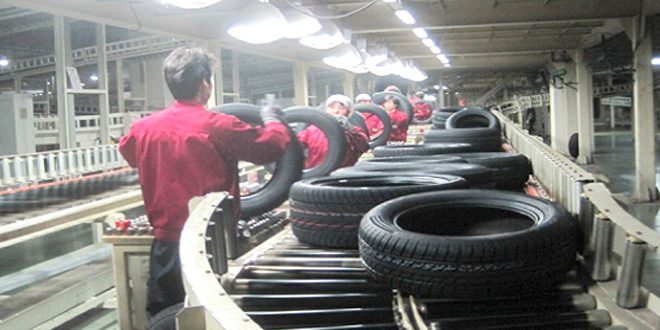 The use of modeling methods allows you to choose a pattern that best complements the existing rubber compound and the internal structure of the future tire. According to the results of computer simulation, the best samples are put into production and are subjected to real tests.
The use of modeling methods allows you to choose a pattern that best complements the existing rubber compound and the internal structure of the future tire. According to the results of computer simulation, the best samples are put into production and are subjected to real tests.
Michelin performs numerous tests every year, during which the tested MICHELIN tires cover over 1.6 billion km. That's about 40,000 trips around the globe. In the process of testing, the last features of the future tire are being finalized. At the moment when all tests are carried out, and the results correspond to the initial task, the tire is launched into mass production.
The initial stage of launching any tire into mass production is the preparation of production sites.
Michelin owns a large number of factories in various countries. And the main task of this stage is to set up each production process in such a way that the tire meets not only the original technical specifications, but also does not differ in all respects from a similar tire produced in any other country.
In the subsequent mass production process, each MICHELIN tire is produced by highly skilled professionals using various types of manual and automatic equipment. When necessary, Michelin designs its own equipment to meet production needs.
Tire production milestones:
Preparation of rubber compounds. As already mentioned above, the formulation of each rubber compound is the basis for endowing the tire with the necessary functions.
Creation of bus components. At this stage, a tread band is formed from the resulting rubber, and the “skeleton” of the tire is created - the carcass and breaker. The first is made from layers of rubberized textile threads, and the second is made from rubberized high-strength metal cord. A tire bead is also being prepared, with which the tire is attached to the rim of the disc. Its main part is a bead ring made of many coils of wire.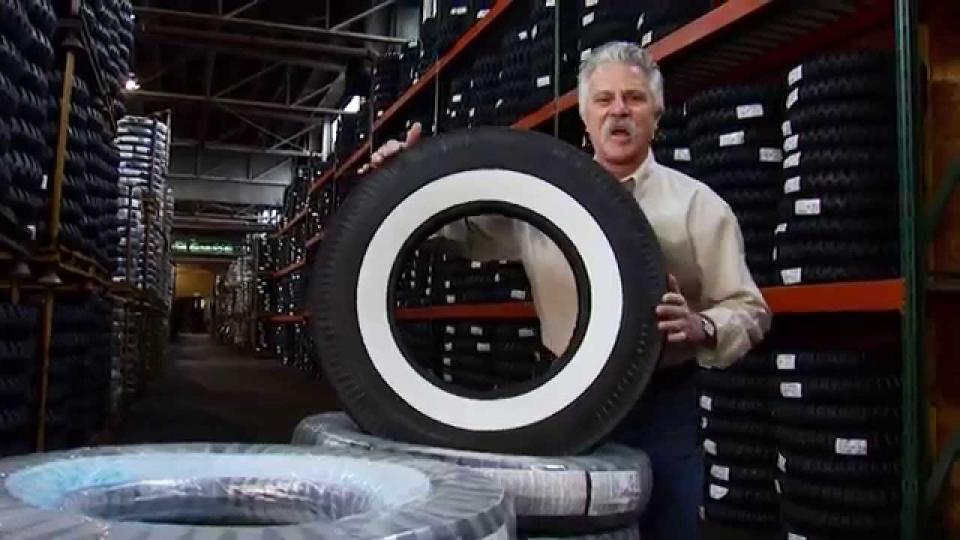
Assembly. Carcass and breaker layers, bead rings, tread with sidewalls are successively superimposed on a special assembly drum. Then all these parts of the tire are connected into a single whole - the tire blank.
Vulcanized. The prepared blank is placed in the mold of the vulcanizer. Steam is injected into the tire under high pressure, and the outer surface of the mold is heated. Under pressure, a relief pattern is drawn along the sidewalls and the tread. A chemical reaction (vulcanization) takes place, which gives the rubber elasticity and strength.
A particularly important element of production is quality control . It begins with a quality check of each element of the tire at the stage of purchase, is present at each stage of production and ends with a multi-level audit of the finished product.
Michelin's quality is also guaranteed by a 5-year manufacturing warranty from date of manufacture.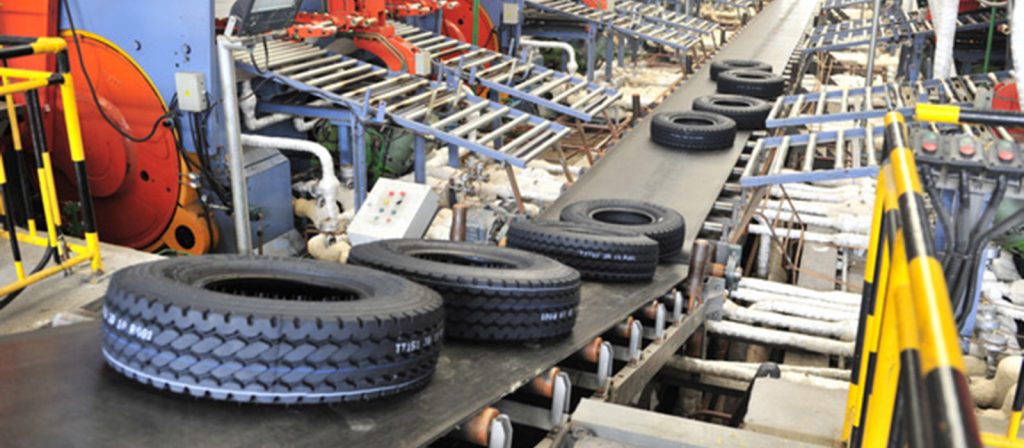 The manufacturer's warranty covers defects in workmanship and materials.
The manufacturer's warranty covers defects in workmanship and materials.
Yaroslavl Tire Plant is one of the oldest tire enterprises in Russia. We will see how modern Cordiant car tires are produced and tested.
The world's first rubber tire was made by Robert William Thomson in 1846, but his invention was not commercialized. The idea of a pneumatic tire reappeared only in 1887, when the Scotsman John Dunlop came up with the idea of putting wide hoops made from a hose for garden watering on the wheel of his 10-year-old son's tricycle and inflating them with air. And already in 1890, the young engineer Chald Kingston Welch suggested separating the chamber from the tire, inserting wire rings into the edges of the tire and putting it on the rim, which subsequently received a recess to the center. At the same time, the Englishman Bartlett and the Frenchman Didier invented quite acceptable methods for mounting and dismounting tires. All this determined the possibility of using a pneumatic tire on a car.
All this determined the possibility of using a pneumatic tire on a car.
1. The main materials for the production of tires are rubber, which is made from natural and synthetic rubbers, and cord. Cord fabric can be made from metal threads (metal cord), polymer and textile threads. The tire consists of a carcass, breaker layers, tread, bead and side part.
2. In the photo you see the future cord.
3. Unvulcanized rubber is very sticky, so it is wound into bobbins with a special material lining, which then allows it to be easily unwound.
4. Blanks in such reels are sent to the warehouse. Number plates are cord width measurements.
5. This is where the production of the tread begins. The rubber band is loaded into the machine, where it is extruded into a future tread.
6. For a quick visual assessment of the tire size, the tread is color-coded.
7. The bead allows the tire to seal against the wheel rim. Bead rings and an inner layer of viscous airtight (for tubeless tires) rubber are designed for this.
Bead rings and an inner layer of viscous airtight (for tubeless tires) rubber are designed for this.
8. The wire from these spools goes to the machine, where it is covered with rubber.
9. On this machine, rubberized wire is twisted to the required diameter and cut into circles.
10. These bead rings are obtained, which are the basis for the production of the entire bead.
11. The board is assembled here. Below you will find a video of this process.
12. The most interesting stage is tire assembly. All necessary blanks are supplied to this machine.
13. Machine from the class “Glory to the robots!”. The assembler only hangs the bead rings.
14. And then the device does everything by itself: it collects all the components of the tire and inflates the workpiece with air under the tread with a breaker.
15. After the tire is assembled, it is sent further along the conveyor. ..
..
16. ... where it is waiting for control - weight check and visual inspection for defects.
17. After that, the blank is sent to the most interesting workshop, where vulcanization takes place. But first, let's look at the mold preparation process.
18. The mold itself consists of several segments that form the tread pattern, inscriptions and all the lines on the sidewalls. And most importantly, mustaches on new tires!
19. It turns out that the tendrils are channels for the removal of air during vulcanization. And when used, they get clogged first. After that, the mold must be cleaned.
20. Hot process - hot shop!
21. The vulcanization process takes place on these machines.
22. The tire blank is fed inward. Outside, it is compressed by a mold, and a bubble is inflated inside so that the tire does not fall into itself. In this case, hot steam is supplied under high pressure.
23. The tire is in place and the mold will now come down from above.
The tire is in place and the mold will now come down from above.
24. This is a non-working machine, but the same inflating bubbles are visible here.
25. It's very hot in here, and there's some special haze.
26. If you look inside the vulcanizing machine, you can see the industrial beauty in its original form.
27.
28.
29. After curing, the finished tire is tested again. At this place, special workers carry out a visual inspection.
30. Further, each tire is already automatically checked for compliance with all the necessary parameters.
31.
32. The plant is constantly in the process of producing new compounds, compounds and tread patterns for new tires. All this is tested on special machines.
33. Dismantled testing machine. The flywheel is rotated by an electric motor, and the tire is already spinning from it.
34. A new machine that allows you to test six tires at the same time in different weather conditions.